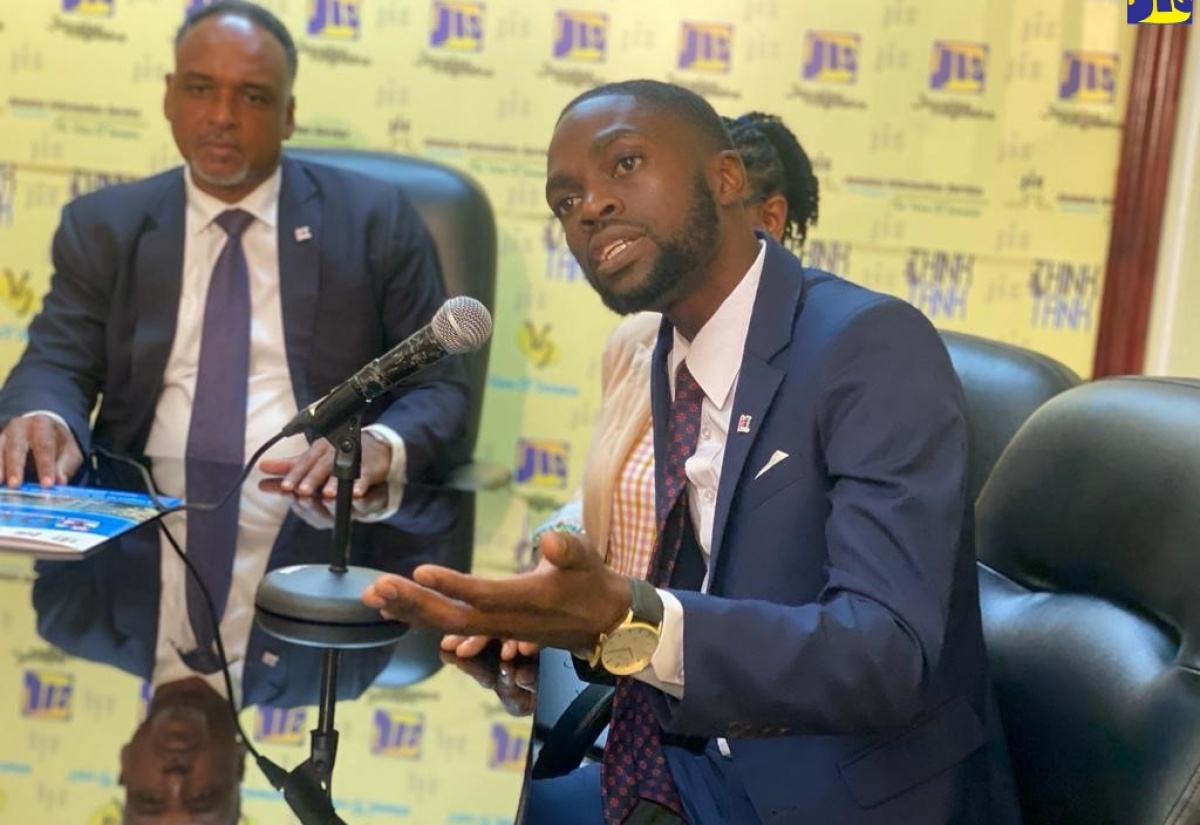JSIF Looking to Provide Additional Support Under Disaster Vulnerability Reduction Project
By: , November 18, 2023The Full Story
With the Disaster Vulnerability Reduction Project (DVRP) ending in May 2024, the Jamaica Social Investment Fund (JSIF) is looking to provide additional support under the initiative where necessary.
“In terms of the National Risk Information Platform (NRIP), initially it was going to be primarily looking at having most of the data local. We have been able to identify additional resources, and what that will allow us to do is to create a hybrid platform that allows for both local storage and still have the cloud-enabling capacity,” said DVRP, Project Manager at JSIF, Dane McLean, during a recent Jamaica Information Service (JIS) ‘Think Tank’.
The NRIP is among the projects being implemented under the DVRP, which commenced in 2016 with US$30 million financing from the World Bank.
It will allow all risk data to be located and updated on a centralised platform that is available to government agencies and the public.
“So, that’s another significant investment that will be plugged into the NRIP and, as indicated, should be online, certainly by May next year,” Mr. McLean added.
The Project Manager further informed that the Earthquake Unit (EQU) will also benefit from additional investment.
“We have some equipment coming in to further boost the capacity of that Unit. Just over another $60 million is being spent to bring in additional equipment to support the EQU in that regard,” he said.
These include several specialised seismic research equipment to enhance the Unit’s capacity.
Meanwhile, the Bureau of Standards Jamaica (BSJ), another beneficiary under the project, is also expected to receive additional support to aid in the training of more stakeholders in relation to the updated building codes.
Mr. McLean pointed out that the initial training commenced with 25 participants at the University of Technology (UTech), Jamaica, on October 30, the same day the most recent earthquake shook the island.
“So, what we are looking to do now, as we intensify the training programme supported by Utech and the International Code Council, is to see how we can bring in additional personnel into the process and, certainly, also looking to see how we can broaden the marketing and the publicity around how to get more ordinary builders across Jamaica fully aware of what is being done,” he said.
For his part, JSIF Managing Director, Omar Sweeney, said the DVRP came to Jamaica at a time when the Paris Agreement was signed and countries had to take a deeper look at climate change adaptation.
“This type of financing really came to the fore, recognising that countries had to make certain actions, as climate change and the fact that storms are going to become more intense, for instance, was real,” he said.
Mr. Sweeney indicated that although a slate of interventions under the DVRP will be completed and commissioned in the coming months, “we recognised and we see in the space that there is still a lot of work to be done”.
“What we are aiming to do is to be relevant in terms of putting the right financing in place, so that we can continue this investment programme of protecting communities,” the Managing Director underscored.



